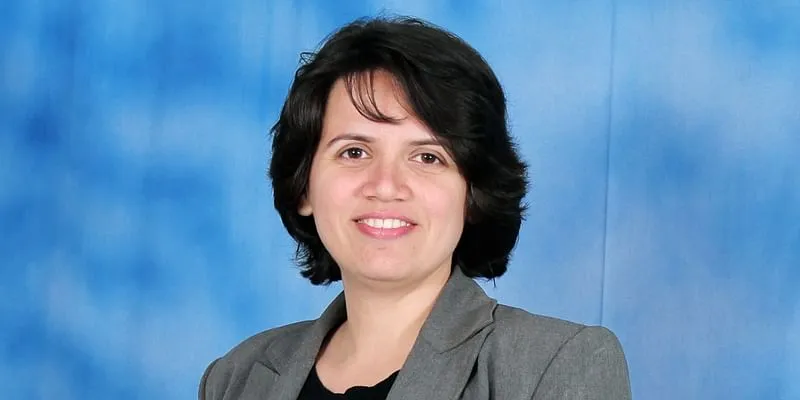Here’s how women entrepreneurs are transforming the fintech landscape - one product and platform at a time
In conversations with HerStory, five women founders discuss building their fintech startups, how there can be more leaders, and building products for the woman consumer.
According to YourStory Research Data, in the last 12 odd years, close to 214 fintech and financial services startups have been founded by women as founders and co-founders. One of them is also an IPO-bound startup - . The data further reveals that between 2015 and 2021, women founder led fintech startups won approximately 22 deals, amounting to $40.34 million.
During the same time frame, there were 130 deals by startups that had one woman co-founder and other male founders, amounting to $2.38 billion. The stark contrast in numbers is revealing of a discrepancy -between startups with solo women founders raising funding versus startups with women as co-founders raising funding.
Nevertheless, while these figures paint a dismal picture of the funding scenario, many women entrepreneurs in the segment believe that the market is slowly but surely opening up for female founders.
With a focus on payments, lending, microfinance, and even stock markets, these founders are paving the way for more women entrepreneurs in the segment.
But what makes the segment lucrative for women and what can spur more women founders in financial services and fintech? HerStory spoke to a few women entrepreneurs to understand their perspective -
Upasana Taku, Co-founder, MobiKwik
“Building MobiKwik has been the most exhilarating experience of my life. My Co-founder Bipin and I started this digital wallet in 2009, when India was completely a cash economy. Everyone advised us to do something mainstream, but we were confident that digital will be mainstream in the times to come,” says Upasana.
While many disapproved the idea of her starting up, the negative chatter and prejudice simply encouraged Upasana more, and against all odds, Bipin and Upasana built MobiKwik.
It was bootstrapped for the first four years, and has achieved its current scale of 120 million registered users having spent only $100 million since inception.
“Today, we are focused on Buy Now Pay Later (BNPL) for daily life payments and have the largest number of pre-approved BNPL users in India at 24 million,” says Upasana.
She believes, although things have evolved since 2009, the key challenges any entrepreneur in the fintech space go through are ideating on the busines idea, hiring the right people, and selling the vision to customers and investors.
“These are the few aspects that would govern the way of business and to an extent forecast its success tangent. The constantly evolving sector demands present and new entrepreneurs to stay on their feet and build products that not only cover the basics but also cater to the rising demand of financially aware, digitally savvy customers,”

Upasana Taku, Co-founder, MobiKwik
What can we do to get more women leaders in the space?
Upasana believes, unlike 2009, the business environment today is more transparent and open. And yet, “out of 44 new unicorns in India in 2021, only four had women founders. The number is not that big, but it is gradually improving. Majority of the startups are realising the need to have women co-founders for their multidimensional personality and well-rounded point of view,” says Upasana.
There is more good news - inclusion of women in the boardrooms and senior positions are seeing some good turns, and even investors are confident about staking their money on women led startups, adds Upasana.
“We have recently seen women founder focused funds formed only to be invested in women led startups. In Southeast Asia, VC firms like Sequoia Capital and others have started incubators and accelerators, again focused on developing and growing early-stage women led startups. These are welcome moves in the right direction. More such initiatives can help women to come forward and start their entrepreneurial journey,” adds Upasana.
Is the woman consumer more open to understanding financial services and products?
In the past five years, Upasana believes more urban women are embracing financial literacy and financial independence.
However, there is still a considerable amount of work left to do to achieve inclusion, especially when it comes to women in Tier II and Tier III cities.
“Working with female customers is less about gender and more about adding a human approach to the conversations. We have built a brand that prioritises our customers' requirements by adding convenience to their daily life payments,” says Upasana.
Lizzie Chapman, CEO and Co-founder, ZestMoney
“I think most women who have made successful careers in traditionally male-dominated industries have done so by completely ignoring any stereotypes and rising above such thinking. Priya (Co-founder at ZestMoney) and I had worked for over a decade in investment banking and tech industries, and many times been one of a handful of women in our roles/departments. We did not face much explicit bias while building but we are well aware that there is often implicit bias in the startup industry. The data itself is pretty bad - fewer “only-female” teams get funded,” says Lizze Chapman, CEO and Co-founder, ZestMoney of the Buy Now and Pay Later startup.
She does feel though that India is relatively a conducive market for women in fintech. Women in the banking industry have been breaking the glass ceiling way before we saw that happening in global financial markets, she says.

Lizzie Chapman, Co-founder, ZestMoney
What can we do to bring more women leaders into space?
“I think it's really important that we publicise and accentuate the voices of women across the board. The more female role models there are in the industry, the better. The startup ecosystem in India is so healthy and strong that women should always feel comfortable to reach out and seek advice from others,” says Lizzie.
Is the woman consumer more open to understanding financial services and products?
Lizzie believes today, women contribute to their households, take part in major financial decision-making, and are learning how to manage their finances to their benefit.
“They are no strangers to the idea of managing debt and handling credit. Having said that, access to formal credit continues to be a challenge for first-time borrowers, especially in rural areas and especially women.
She explains tech-enabled platforms, like ZestMoney, are democratising credit for shoppers, and women in particular, by allowing them access to credit on their phones breaking physical barriers. ZestMoney has seen its women customer base double over the last year and see this growing significantly this year too.
“We launched one of the largest financial literacy campaigns, some of which were targeted specifically at women to provide clear, jargon-free, and transparent content on financial planning. We believe this is a huge impact area since it helps women get comfortable with finance and gives them access to the right information on savings, planning, and investment. We plan to double down on this, making it accessible in regional languages as well so it can help women make better-informed financial decisions across the country,” says Lizzie.
Natasha Jethanandani, Co-founder and CTO, Kaleidofin
“For me, fintech is really a channel for solving the issues of access to finance and bringing in innovation in standard financial products for the lower income, informal groups of customers. The need for financial services innovation is much larger for these 500-600 million sized segments rather than the top 50-100 million customers in the higher income groups,” says Natasha Jethanandani, co-founder and CTO, of the neobank .
However, reaching the informal customer group is not easy. For instance, the customer base is extremely heterogeneous, spread across states, occupations, income levels and goals. Customers often have sketchy knowledge of financial products and are also biased by past experiences in their community.
Earning the trust of customers is much tougher for a financial service provider than any other sector. To address this, offerings need to be designed to be easy to understand, intuitive to use and personalised to each customer.
“Lastly, financial-services is a highly regulated sector, and an entrepreneur needs to be very careful about making sure the structure of products and services comply with the regulations,” says Natasha.
In less than five years of establishment, Kaleidofin today reaches over a million customers, spread across 230 districts and 14 states in semi urban and rural India.
According to Natasha, some of the lessons that has held her in good stead through this journey is - 1) being nimble and the ability to adapt quickly to new, 2) focus on the team and creating a growth culture supported by the right opportunities and training programs and finally 3) not losing focus while being ambitious. On the last point, she adds that as a startup, every customer problem will look like an opportunity but, it is important to choose wisely and ensure that any product/problem aligns with the mission of the firm. “We are still learning this as we go but getting better at it.”
What can we do to get more women leaders in space?
While fintechs, as well as large firms in the financial services sector, have demonstrated a culture of diversity and inclusion - Natasha believes the momentum for women participation and involvement in the sector needs to be supported by simple yet effective steps like making diversity an important and uncompromisable agenda for hiring across board.
“Creating a culture of work-life balance and rules that support women’s participation has also shown to help significantly in teams I have been involved in. Outside of the organisation, I also believe that networking groups and professional communities where participants can discuss, learn, and support each other is very useful in supporting growth. I have found it valuable to get references or bounce ideas off other founders or CTOs,” says Natasha.
Is the woman consumer more open to understanding financial services and products?
Close to 90 percent of Kaleidofin customers are women from the micro saving and informal sector. The team found that women are keen to use financial products that help them save for their families and set up for a better financial future.
However, their knowledge about the products is often limited simply because there is no access to the right information or experience.
“According to me, simplicity and ease of understanding should be the first criteria for designing financial products targeted at women. Simplifying the process of application, breaking-down the end results into relatable goals rather than creating complex matrices are some of the aspects that have worked for us. Easy access to services also plays a significant role in faster adoption of services and firms must work on reducing friction at access points,” says Natasha.
Citing an example she explains, introducing tech and touch model at their doorstep for KYC and 24 hours call centre in regional languages have reduced the need for physical visits to branches.
“We are also enabling women to become more comfortable using these services digitally by making digital access opt-in and easier for the entire household,” adds Natasha.
Aishwarya Jaishankar, Co-founder,
Aishwarya Jaishankar has had long stints with banks and fintech companies. Somehow, she would always enjoy roles where she had the opportunity to disrupt and innovate.
“While launching India's first digital savings account, I witnessed the power of digital and digital-led exponential growth. I joined an MNC bank for taking on a wholesale revamp of their retail digital banking. However, I was keen on becoming an entrepreneur and I left my job to start consulting for neobanks and fintechs to help them work better with their bank partners,” says Aishwarya.
This consulting stint was an eye-opener. Aishwarya realised there was a big potential for banking as service offerings that go beyond just bank integration.
“Launching a fintech product is currently painful, taking months of knocking on multiple bank doors. We have chosen credit cards and pay later as our first products. Transactional credit in India is massively under-penetrated with just 60 million credit cards vs 800 million plus debit cards. We feel that fintechs will disrupt this space and we want to arm them with the right technology,” says Aishwarya.
What can be done in the segment?
- Need for a mindset change from banks vs fintech - Banks bring in advantages like inherent customer trust and lowest cost of capital. Fintechs are agile and innovative. If the mindset moves from banks vs fintech to fintech-banking partnerships, the entire ecosystem will thrive.
- Rapidly changing regulations - Fintech is a dynamic industry, and real-time changes in regulatory compliance are needed to adjust with the dynamism. For regulators, it is important to find the right balance between making progressive changes and at the same time avoiding regulatory overload for this young industry. The recent decision by RBI to have a fintech department is a move in the right direction.
- Evaluating innovations with a traditional mindset- Banks and regulators need to evaluate fintechs for the customers of today. Digital first solutions have become the norm and a lot of traditional, physical distribution-led thinking needs to evolve from processes to API-led thinking.
- Data security and privacy risk - Data leaks, platform downtimes, and information theft has become quite rampant in the financial services space. Data is the backbone of fintechs, and data security is crucial. Startups need to invest heavily in developing measures to combat security risk and comply with regulatory requirements.

Women as consumers of fintech products
Aishwarya believes the key issue with women consumers is the lack of active participation and decision making.
“While women constitute 50 percent of the population, across retail banking, only 20-40 percent of customers are women. Women need much higher handholding to take this number higher. In my experience, I have seen focussed communication for women and educating them helps with better engagement. A very simple example I like to give is how offers on bill payments always gets better conversion rates from women - they are the ones paying the household bills mostly,” says Aishwarya.
She therefore believes neobanks are exciting, and women as a segment will be better catered by institutions which build curated products for them.
Shweta Aprameya, Founder and CEO, ARTH
Shweta Aprameya had started her journey as an entrepreneur in 2013. As a solo founder, she took the plunge for the first time after a successful corporate career when being a startup founder was not so cool & encouraging as it is today. It was a hard sell personally and professionally.
“You need to align and orient everyone toward your goals - yourself, family and the ecosystem around you. As a startup ‘solo’ founder you need to be ready with a smile for any type of job every day with the same grit and energy,” says Shweta.
After building the first data driven micro payments startup, Shweta went on to take it to great heights and even had a successful exit, when it was bought over by Airtel Payments bank.
“Soon after that, I set up a women’s livelihood foundation and in 2018, started a digital lending fintech - . The big lesson that I learned after starting ARTH is that you always start from ground zero. While my existing network did open doors, at each step, whether it was a network partnership or hiring talent, you had to establish and prove your worth all over again,” says Shweta.
The fintech sector in India, Shweta believes, has seen exponential growth both in terms of customer base and funds raised. However, if one looks carefully, the growth in customer base, to a large extent, is limited to big cities and technologically savvy customers.
The real challenge for entrepreneurs in the fintech sector is to grow beyond the metros and break into the Tier III cities. While internet connectivity and availability of smartphones is not a challenge anymore, lack of awareness about digital transaction safety, and lack of data are huge roadblocks faced by all fintech firms - payment, lending, or insurance.
"In less than five years, we have uniquely impacted 3.5 lakh micro MSME owners focusing across 18,000 pincodes in India. Also, we have 30 percent gender diversity in our company," says Shweta.
What can we do to get more women leaders in space
Shweta believes traditional institutions have always looked at finance as a product first. For instance, one single recurring deposit product with little flexibility to adapt to income variability or business cycles.
“Today, use of technology enables fintech firms to really customise the services for individuals or smaller clusters. Product and distribution design today involve a lot more empathy and understanding of the end-use and users. This makes it an obvious place for women to lead in. Secondly, since all fintech firms are young, they are consciously working towards creating an inclusive culture,” says Shweta.

Shweta Aprameya, Founder ARTH
Is the woman consumer more open to understanding financial services and products?
ARTH works with micro-entrepreneurs, spread across Tier II and III cities. Majority of these enterprises are run and managed by women.
“Based on our experience, they are some of the smartest people when it comes to managing resources and dealing with crisis. However, most of them are now comfortable using non-formal financial products such as chit funds for credit/savings. For us, the biggest challenge we face is to make them understand the importance of using regulated, formal-financial products,” says Shweta.
Secondly, women tend to have joint accounts or operate through accounts of the man of the house. This makes it difficult for any finance firm to service them. Creating financial accounts where trails of information can be attributed to them is the other aspect we encourage our customers to inculcate, she concludes.
Hearing these women fintech leaders speak, there is no doubt the status quo is changing as they pave the way to create opportunities for more women and growth. What remains to be seen is how technology can work as a much-needed leveller of the playing field and a game changer in the financial landscape of India.
Edited by Anju Narayanan



![[YS Exclusive] After Ola, why Pranay Jivrajka decided to start in the men’s sexual wellness space](https://images.yourstory.com/cs/2/a9efa9c02dd911e9adc52d913c55075e/Pranay-1642070411153.jpeg?fm=png&auto=format&h=100&w=100&crop=entropy&fit=crop)


![[Year in Review 2021] Despite stellar Nykaa IPO, most women entrepreneurs were asked one question: business or hobby?](https://images.yourstory.com/cs/4/211ccaf00e6d11e997fe8f165dce9bb1/WomenEntrepreneurship2021-03-1640259996436.png?fm=png&auto=format&h=100&w=100&crop=entropy&fit=crop)



![[HS Conversations] This Brazilian woman is taking Henna global with her natural cosmetics brand, Surya Brasil](https://images.yourstory.com/cs/4/a9efa9c02dd911e9adc52d913c55075e/Cleliafeaturedimage-1639310267308.jpg?fm=png&auto=format&h=100&w=100&crop=entropy&fit=crop)





